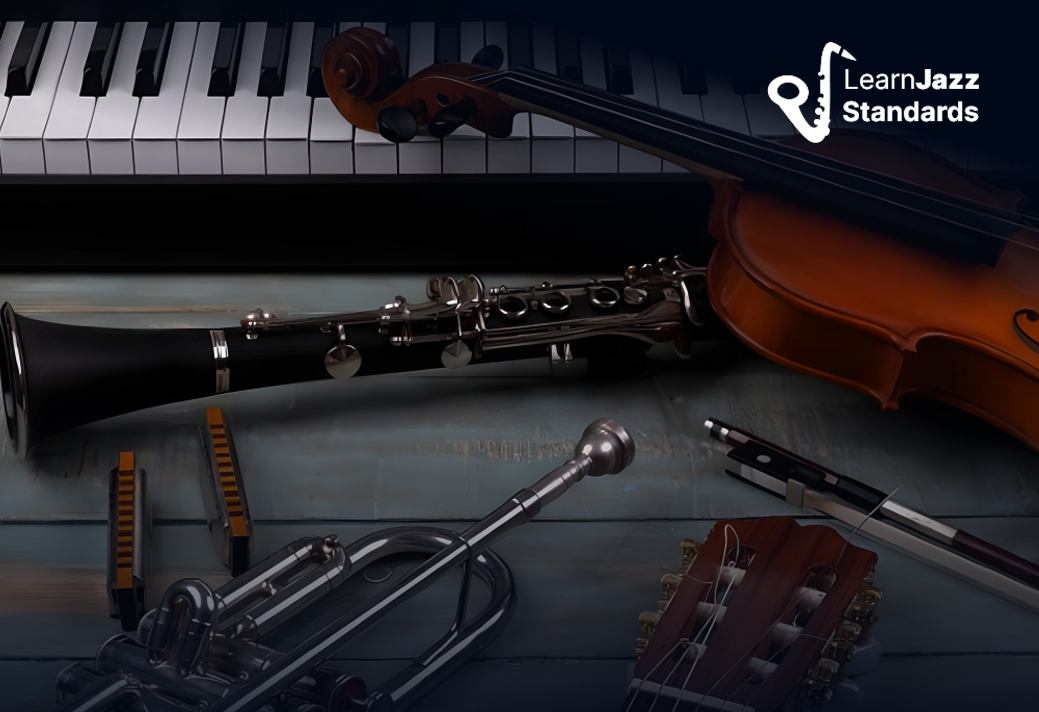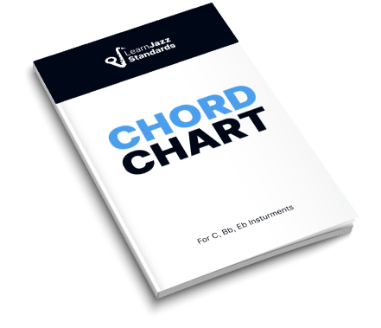Have you ever read a lead sheet or chord chart and encountered some crazy symbol built into the chord progression? If crazy chord symbols are getting in your way and keeping you from learning about jazz harmony, then this post is for you!
In this post, we’ll review everything you need to know about chord extensions, how to construct extended chords, and how to tackle improvisation over altered and unaltered extensions. You’ll come out on the other side with a complete understanding of chord extensions. Plus, we’ll explore how you can leverage them in jazz improvisation.
As it turns out, understanding chord extensions is vitally important for any jazz musician, whether you play a chordal instrument or not. Jazz harmony is the foundation of jazz music, and understanding it is crucial to navigating a jazz tune, whether you are taking a solo or comping.
If you have been struggling to make measurable progress in your jazz studies or feel like you aren’t effectively using your free time, definitely check out the Learn Jazz Standards Inner Circle.
When you join the Inner Circle, you gain access to everything you need to bypass the roadblocks and obstacles preventing you from becoming the jazz musician you want to be.
Practice smarter, not harder. Come see what the Inner Circle has to offer.
Table of Contents
What Are Chord Extensions?
Chord extensions are additional notes you can add to a basic 7th chord, which consists of four notes. These four-note chords include:
- The root (R)
- 3rd
- 5th
- 7th
Common chord extensions are the 9th, 11th, and 13th notes. These are layered on top of the 7th chord to enrich the sound. You can add extensions to major chords, minor chords, and any other chord type.
However, a chord occasionally leaves out a note from the base triad to prevent dissonance.
Unaltered chord extensions— the 9th,11th, and 13th—are equivalent to the 2nd, 4th, and 6th but raised by an octave.
- The 9th is an octave above the 2nd note.
- The 11th is an octave above the 4th note.
- The 13th is an octave above the 6th note.

In many jazz standards, chord extensions are implied by the melody note. Many of the chord progressions you’ll encounter might not have an extended note displayed in the chord symbol. However, if you check the melody note, it is often some chord extension.
Which Extensions Can You Use On Seventh Chords?
Let’s review which chord extensions you can use on different 7th chords. This is especially important to understand for composing and for chordal accompaniment instruments.
Remember, these are unaltered extensions. We will go over altered extensions in a second.
9th Chord Extension
You can add a 9th chord extension to:
- Major 7th Chords
- Dominant 7th chords
- Minor 7th Chords
- Half-Diminished 7th chords
Formula: R-3rd-5th-7th-9th
Example: Cmaj9 (C-E-G-B-D)
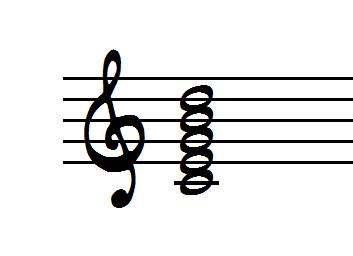
Check out our ultimate guide to seventh chords if you need a refresher on 7th chords and how to build them.
11th Chord Extension
You can add an 11th chord extension to:
- Minor 7th Chords
- Half-diminished 7th Chords
- Diminished Chords
Generally, the 11th can be added to chords with a b3. Otherwise, the 11th would clash with the major 3rd.
Formula: R-3rd-5th-7th-9th-11th
Example: Cmin11 (C-Eb-G-Bb-D-F)
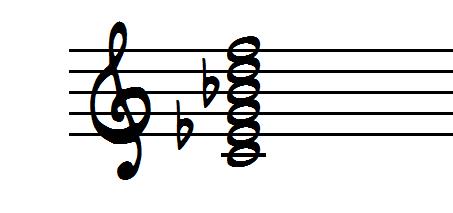
13th Chord Extension
The 13th Chord Extention can be added to:
- Major 7th Chords
- Dominant 7th Chords
- Minor 7th chords
Formula: R-3rd-5th-7th-9th-13th
Example: C13 (C-E-G-Bb-D-A)
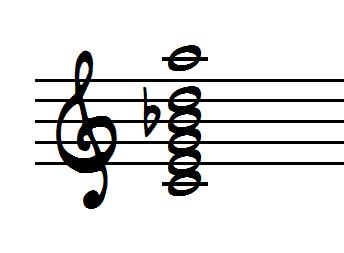
13th chords usually do not include the 11th in the chord.
Altered Chord Extensions
That covers unaltered chord extensions. Let’s move on to altered extended chords.
What’s an altered chord extension? An altered chord tone is any functioning chord tone that is raised or lowered by a half step to achieve a desired effect. Altered chord extensions use altered harmony and non-diatonic tones, and, as a result, the chord sounds richer.
Altered Chord Extensions Over Major Seventh Chords
Altered Chord Extensions You Can Stack On A Major Seventh Chord:
- b5
- #5
- #11
- b13
Note: Major seventh chords never have a natural 11th in them. However, they can have an altered (sharp) 11th. Also, the b13 is not very common.
You might notice that a #11 and a b5 are technically the same note. They are enharmonically equivalent, but according to music theory, one is not a chord extension, and the other is despite being the same note.
The b5 is not a chord extension because you alter a note in the original C major triad, not a note beyond the octave.
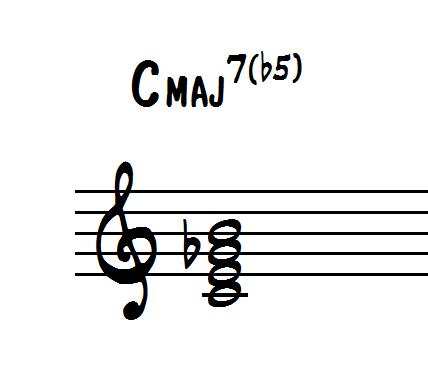
C major triad (C E G):
- C: Root
- E: Major 3rd
- G: Perfect 5th
C major triad with a flat 5 (C E Gb):
- C: Root
- E: Major 3rd
- Gb: Flat 5
BEFORE YOU CONTINUE...
If you struggle to play amazing jazz solos and want to learn the secret strategies the pros are using to improvise, our free guide will get you on the right track.

#11s are altered chord extensions because they are part of the extended harmony and do not change the original triad.
- C: Root
- E: Major 3rd
- G: Perfect 5th
- B: Major 7th
- D: 9th
- F#: #11th
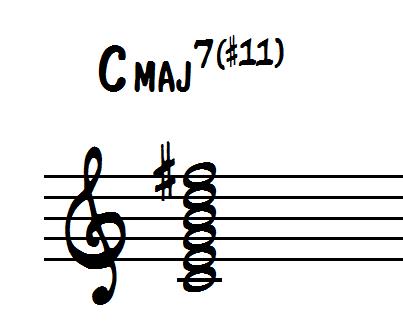
To sum up, a major seventh chord with a flat 5 takes the existing perfect 5th and flats it. But the major seventh chord with a #11 keeps the perfect 5th and adds the #11th on top of the chord.
Altered Dominant Chord Extensions
Chord Alterations You Can Stack On A Dominant Seventh Chord:
- b5
- #5
- b9
- #9
- #11
- b13
When it comes to chord extensions, you have the most choice with dominant 7th chords.
“The Alt Chord”
One dominant chord variation you are sure to encounter is the alt chord. If you ever see on a piece of sheet music “C7alt,” that just means that some or all of the extensions are included in the chord and altered.
These chords tend to have a rich and tense chord quality. Jazz musicians can outline some or all the notes when playing a chord or improvising. Player’s choice!
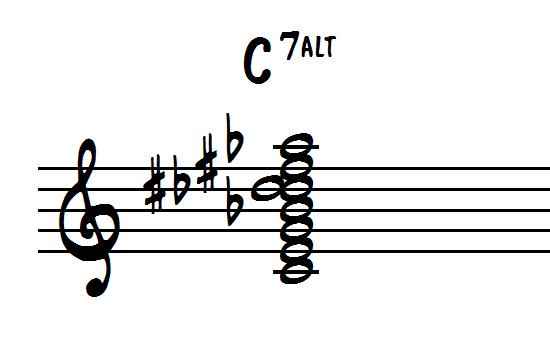
Alt chords tend to look messiest on sheet music.
Altered Chord Tones Over Minor Seventh Chords
Possible alteration: adding a Major 7th
It’s not common to alter extensions on minor chords, but there is one “extension” you should know about—adding a major 7th interval to a minor chord.
Technically, when you take a minor triad and add a major seventh on top, it’s not an extension because it is still within an octave of the root. However, including it with the other altered extensions is convenient because you will encounter minor(maj7) chords, which act like altered extended chords.

Ready to take music theory off the page and apply it? The next step is learning how to hear these chord alterations. Check out this guide for hearing 7th chords with extensions and alterations.
Thinking About Chord Extensions During Improvisation
We’ve all been there—
You are reading down a lead sheet on a gig when a wild F#(b9#11add13) suddenly appears and throws a wrench in your flow.
Though this nightmare scenario is scary, with a little preparation and an understanding of the harmonic foundation behind these crazy chord extensions, you should be able to play over any monstrous chord symbol.
If you take some time to understand chord construction, you can leverage your chord knowledge to improve your jazz improvisation vastly!
Take a look at the image below:

Here we have a basic major scale with the note heads changing between two colors.
All the notes in red can be grouped to show a C major chord and all possible extensions from the same scale (Note the F is unaltered here):
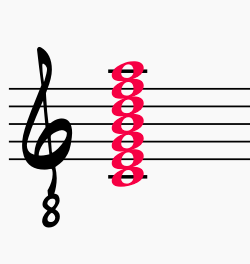
The notes in green can be put together to show a D minor chord and all possible extensions from the same scale:
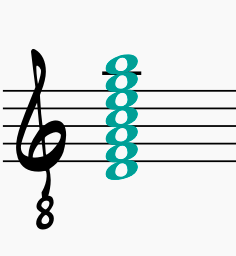
Playing Triads Over Chords To Hit Various Chord Extensions (What To Do When You See Crazy Chord Symbols)
When you see chord extensions on sheet music or know that certain chord extensions are built into a chord progression, you can isolate a basic triad from the parent scale to hit all the chord extensions. By playing a basic triad that outlines chord extensions, you scrap the root (and often the 3rd or 5th) and focus on the extended notes.
For example, if you are improvising on a chord progression that has a Cmaj9 in it, you can isolate a diatonic triad that contains a D. On a Cmaj9 chord, you’d want to avoid diatonic triads that contain an F because the major third will sound weird next to the perfect fourth.
Let’s use a B diminished triad because it contains three notes found in a Cmaj9 chord:
- G (the 5th)
- B (the major 7th)
- D (the 9th)
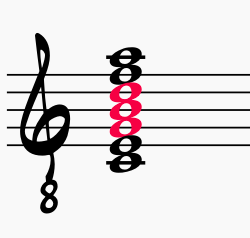
This trick works for other chords as well. You can isolate a triad from a given scale degree of any major or minor key to hit any chord extensions you might encounter. Plus, if you encounter altered extensions, you simply modify the triad to accommodate the altered note.
For example, let’s say you encounter the dreaded C7alt chord. Remember, you have many choices with this chord type. That means there are many basic triads we can pull out of this single chord. Also, You can approach these by playing the triad as arpeggios to create lines or by playing them as rootless voicings if you play a chordal instrument.
You can pull an F# triad out of the chord to hit the 7th, b9, and #11 of a C7alt chord (note the Db was changed to a C# and the Bb was changed to an A#).

You can pull an Ab triad out of the C7alt chord to hit the b13 and the #9 (note we changed the D# to an Eb). This triad will contain the root note and two altered tones.

What other triads can you build out of a C7alt chord? The ultimate goal is to be able to take any chord type and pick out target notes when comping or improvising to create the exact sound you hear in your head.
If you want to learn how to use chord extensions to spice up a chord voicing or jazz solo, check out this podcast episode on chord voicings and how to play over any extended chord.
Take Jazz Chords To The Next Level! Join The Learn Jazz Standards Inner Circle
If you found this crash course in seventh chord extensions and alterations eye-opening and insightful, you must check out the Learn Jazz Standards Inner Circle.
Whether you play jazz piano, guitar, or saxophone, you know how important it is to have a solid grasp of jazz harmony, 7th chord extensions, voice leading, chord voicings, bass lines, and jazz chord progressions.
The Inner Circle is designed for jazz musicians who want to take their jazz playing and comprehension to the next level. Ready to master jazz harmony? The Inner Circle will help you get there.


